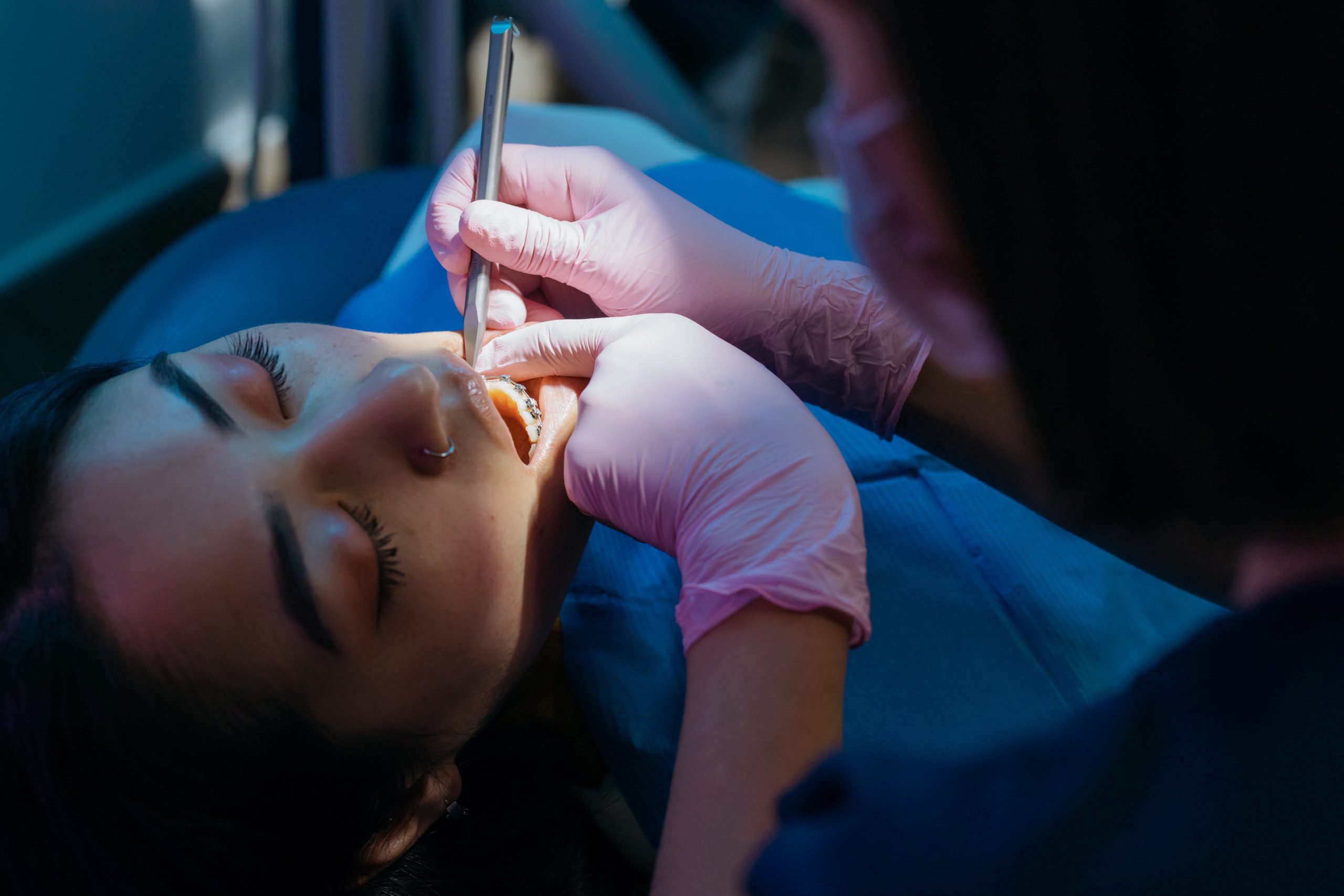
Invisalign vs. Braces: Which One is Right for You?
If you’re looking to straighten your teeth, you might be wondering which option is best for you: traditional braces or Invisalign? This article will explore the differences between these two orthodontic treatments and provide the information you need to make an educated decision. So let’s jump in and find out which one is right for your smile!
What Are Braces?
Traditional braces are orthodontic devices used to correct dental alignment issues such as overcrowding, gaps, overbites, underbites, and crossbites. They consist of metal or ceramic brackets that are attached to your teeth, with an archwire connecting them. The archwire places pressure on the teeth, gradually moving them into their proper position. Braces are often associated with uncomfortable and clunky metal brackets, but advancements in orthodontic technology have produced more aesthetic options, such as tooth-colored ceramic braces.
Types of Braces
- Metal braces: Traditional metal braces are the most common and affordable option. They consist of stainless steel brackets and wires.
- Ceramic braces: Ceramic braces, like the metal option, use brackets and wires but are made of tooth-colored materials, making them less noticeable.
- Lingual braces: These braces are similar to traditional metal braces, but are placed on the inside of the teeth, making them invisible. However, they may be more challenging in terms of cleaning and maintenance.
What Is Invisalign?
Invisalign is a teeth-straightening system that uses custom-made, virtually invisible aligner trays made of transparent plastic. These trays are worn at least 22 hours per day and are switched out every 1-2 weeks for a new set, each set being slightly different to progressively adjust your teeth. Invisalign is a less invasive and more aesthetically pleasing alternative to braces, as the clear trays are virtually invisible to the naked eye.
Comparison of Invisalign and Braces
Deciding between Invisalign and braces depends on a variety of factors, including your specific orthodontic issues, lifestyle, and personal preferences. In this section, we will explore the durability, comfort, aesthetics, treatment time, and cost of both options to help you make an informed decision.
Durability
Traditional braces are made of durable materials that can withstand various types of dental issues. Invisalign aligners, on the other hand, can be more susceptible to damage if not handled properly. While scratches and breaks are relatively rare, they are more prone to occur than with braces.
Comfort
The smooth and rounded edges of Invisalign aligners are generally considered more comfortable than braces, which have sharp and protruding components that can irritate the cheeks and lips. Invisalign users may experience minimal discomfort during the initial adjustment period but usually find it much easier to tolerate than braces.
Aesthetics
For those concerned about their appearance during treatment, Invisalign holds a clear advantage (no pun intended), as its transparent trays are virtually invisible. Traditional braces, especially metal ones, are more visibly noticeable. However, it’s worth noting that ceramic braces, while more expensive, offer a more discreet appearance than metal braces.
Treatment time
Although treatment time varies depending on each individual case, Invisalign treatment typically lasts between 12-18 months, while braces often require 18-24 months. It’s essential to follow your orthodontist’s instructions and wear your aligners as prescribed to ensure optimal results.
Cost comparison
In general, Invisalign tends to be more expensive than traditional braces. However, this can vary depending on the complexity of your dental issues and location. Many orthodontists offer payment plans and accept insurance to help offset the cost. It is crucial to consult with your orthodontist to determine the most accurate price estimate for your specific situation.
Advantages of Braces
Braces offer several advantages, which are outlined below:
- Better for complex orthodontic issues: Braces are more effective than Invisalign for treating complex dental problems such as severe overcrowding, significant misalignment, and extreme overbite or underbite issues.
- Stronger than Invisalign: Due to their metal or ceramic components, braces have a higher level of durability than Invisalign’s plastic aligners, making them a better long-term solution for individuals who may be prone to damage or loss.
- Less need for discipline in usage: Braces are permanently affixed to your teeth, eliminating the need to remember to wear them consistently. On the other hand, the effectiveness of Invisalign is dependent on the user’s compliance in wearing them for the required 22 hours per day.
Advantages of Invisalign
Invisalign offers many advantages as well, including:
- Removable, allowing for better oral hygiene: Unlike braces, which can make it challenging to thoroughly clean your teeth, Invisalign is removable, making it easier to maintain a proper oral hygiene routine.
- Virtually invisible: As previously mentioned, the clear aligner trays are almost undetectable, making Invisalign a more aesthetically appealing option.
- Typically less painful: Invisalign users generally experience less discomfort than those with braces due to the trays’ smooth edges and gradual pressure application.
- Fewer food restrictions: With braces, users must avoid certain foods that can damage the brackets and wires. Invisalign’s removable trays allow users to eat whatever they want, as long as they remove the trays beforehand and clean their teeth afterward.
How to Determine the Best Option?
Ultimately, the best choice between Invisalign and braces will depend on your specific needs and preferences. Here are some steps to take in making that decision:
- Evaluate your specific needs: Determine if your orthodontic issues are minor or more complex. Invisalign may be more suitable for minor dental corrections, while braces may be the better option for severe cases.
- Consult with an orthodontist: It is crucial to have a professional orthodontist evaluate your teeth and offer their expert opinion. Practitioners such as specialized braces teams in locations like braces Montreal offer comprehensive evaluations and a wide range of orthodontic solutions that can help you decide which treatment will work best for you.
- Personal preferences: Consider which factors are most important to you: aesthetics, comfort, cost, and treatment duration. Everyone’s preferences will differ, so weigh the pros and cons accordingly.
- Consider budget and insurance coverage: Consult with your orthodontist and insurance provider to determine the most cost-effective option for you. Some providers, such as those offering cosmetic dentistry Calgary, may have payment plans available to help with the costs.
Conclusion
The choice between Invisalign and braces will depend on your specific needs and preferences. Each treatment option has its advantages and disadvantages, as outlined in this article. Be sure to consult with a professional orthodontist, such as those specializing in braces Montreal, to obtain a comprehensive evaluation and recommendation for your specific needs. Remember, a healthy and beautiful smile is an investment worth making.



